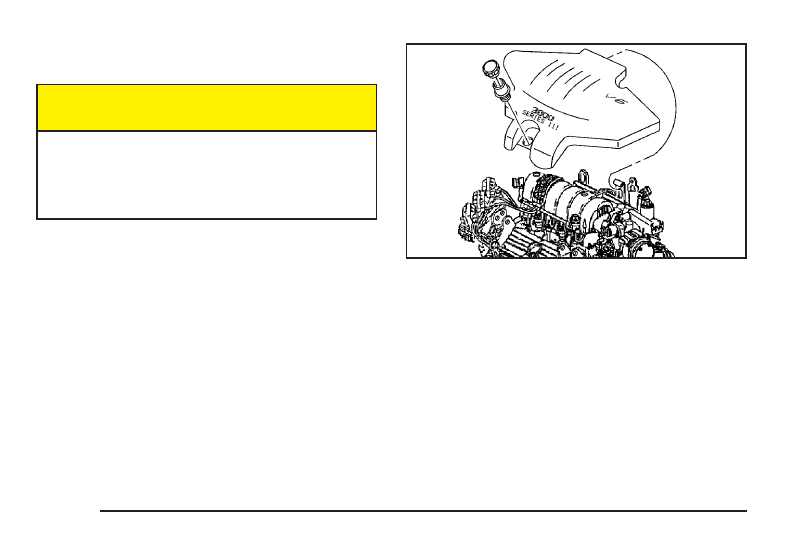Pontiac Grand Prix (2005 year). Manual - part 21

2. Then keep turning the pressure cap, but now push
down as you turn it. Remove the pressure cap.
{
CAUTION:
You can be burned if you spill coolant on hot
engine parts. Coolant contains ethylene glycol
and it will burn if the engine parts are hot
enough. Do not spill coolant on a hot engine.
3. If the vehicle has the 3800 V6 engine, remove the
Series III V6 engine cover shield to access the
bleed valve.
3.1. Clean the area around the engine oil fill tube
and cap before removing. Twist the oil fill
tube, with cap attached, counterclockwise
and remove it.
3800 Engine
5-34